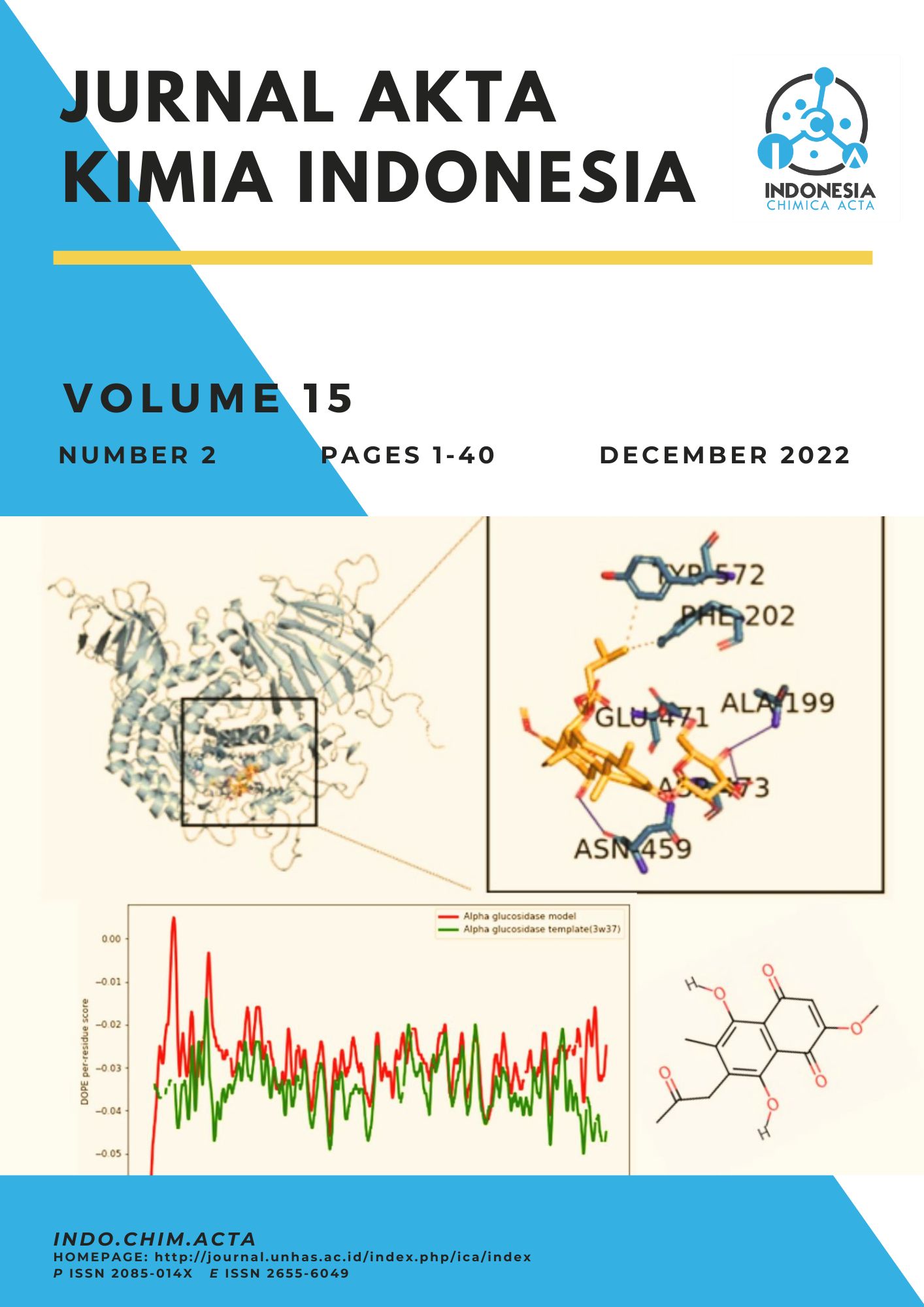Main Article Content
Abstract
Alzheimer’s disease (AD) are the progressive necrosis of central cholinergic neurons, followed by intra and hippocampal acetylcholine (ACh) levels. Acetylcholinesterase Enzyme (AChE) is an enzyme that is responsible for the metabolic breakdown of acetylcholine (ACh). The hydrolysis of ACh by excess amount of AChE decreases the amount of ACh in the brain, thus interfering with the normal brain functions. Modelling of seven isoquinoline derivative compounds is done by using Computer-Assisted Drug Design (CADD) such as molecular docking and ADMET properties calculation. The results obtained show that compound 13, 14, 16, and 17 have a lower binding energy about -9 kcal/mol. It can be caused due to the more electron donating groups in these compounds. ADMET properties calculation is attempted to evaluate the interaction between the four compounds (13, 14, 16, and 17) when entering the body systems. ADMET calculation result is showing that compounds 13 and 14 fulfill the parameter in adsorption properties while the others are not. Indicating that compounds 13 and 14 are potential to be Alzheimer’s drug. This result is in line with experimental study.
Article Details

This work is licensed under a Creative Commons Attribution-ShareAlike 4.0 International License.
How to Cite
Rasyid, H., & Riska, M. (2022). Molecular Docking Analysis and ADMET Properties of Isoquinoline Derivatives as Potential Acetylcholinesterase Inhibitors. Jurnal Akta Kimia Indonesia (Indonesia Chimica Acta), 15(2), 9-15. https://doi.org/10.20956/ica.v15i2.21572
